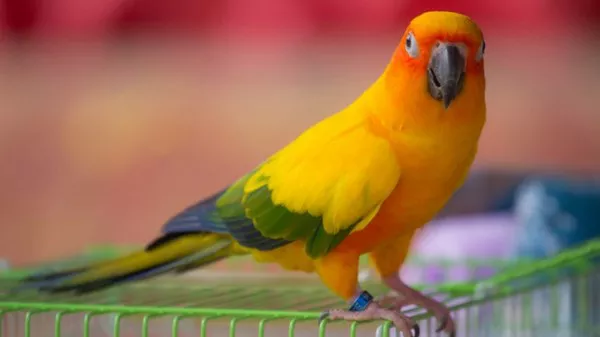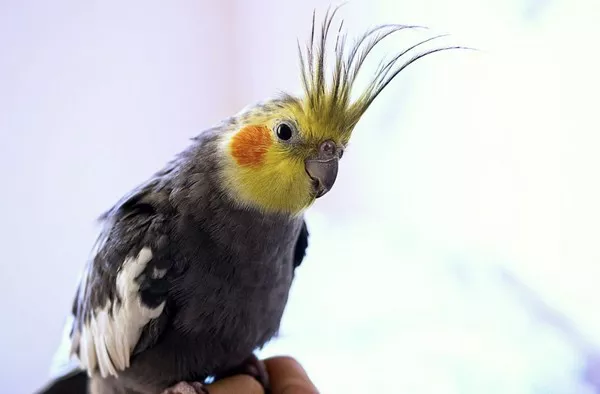When setting up a community tank, one of the most frequently asked questions by aquarium enthusiasts is whether different species of fish can live together peacefully. Among the common species kept by aquarium hobbyists are the Pleco (a type of catfish) and the Betta fish (also known as the Siamese fighting fish). The combination of these two species seems attractive to many, given their popularity and distinct characteristics. However, can they really live together in harmony, or are there potential risks?
In this article, we will explore the compatibility of Plecos and Bettas, the specific care requirements of each species, and the factors that could influence whether these two can coexist peacefully in the same tank.
Understanding the Pleco
The term “Pleco” generally refers to a group of freshwater fish belonging to the family Loricariidae, commonly known as catfish. The most commonly kept species in home aquariums are the Hypostomus plecostomus (often called the common Pleco) and the smaller, more manageable Ancistrus species, like the Bristlenose Pleco.
Plecos are typically bottom-dwellers, known for their algae-eating habits, which make them a valuable addition to aquariums by helping to keep tank surfaces free of algae. Plecos can grow to varying sizes depending on the species, with some reaching lengths of up to 24 inches (60 cm) or more, while others, like the Bristlenose Pleco, remain much smaller, typically around 4 to 6 inches (10 to 15 cm).
Physical Characteristics:
Body Shape: Plecos usually have a flattened, armored body with a hard, bony plate covering their back and sides. Their ventral fins are adapted for suction, which they use to cling to surfaces.
Color: Plecos are typically brown or gray, often with darker spots or patterns, which help them camouflage on the substrate of the tank.
Behavior: These fish are nocturnal and tend to be peaceful. They are solitary creatures and prefer to spend their time grazing on the bottom of the tank or on hard surfaces.
Care Requirements:
Tank Size: Plecos need a relatively large tank, especially if they are a species that grows to a significant size. A minimum of a 75-gallon (280-liter) tank is often recommended for larger species, while smaller Plecos like the Bristlenose require at least 30 gallons (114 liters).
Water Conditions: Plecos are hardy and can tolerate a range of water conditions, but they do best in well-filtered water with a temperature range of 72-82°F (22-28°C) and a pH level of 6.5 to 7.5.
Diet: While Plecos are famous for their algae-eating habits, they are also opportunistic omnivores. They need supplemental food like sinking pellets, vegetables (like zucchini or cucumber), and occasionally protein sources like frozen or live foods.
Understanding the Betta Fish
The Betta fish, also known as the Siamese fighting fish (Betta splendens), is a vibrant and widely popular aquarium species. Betta fish are famous for their striking appearance, with long, flowing fins and vivid colors. These fish are native to Southeast Asia and are often found in rice paddies, shallow ponds, and slow-moving streams.
Bettas are known for their territorial nature, especially the males, which are notorious for their aggression toward one another. Despite this, many hobbyists keep them in single-species tanks or carefully choose compatible tankmates.
Physical Characteristics:
Body Shape: Betta fish have a laterally compressed body shape, with long, flowing fins that give them their unique appearance.
Color: Bettas come in a range of colors, including red, blue, purple, white, and multi-colored varieties. The vibrant color patterns are one of the main reasons for their popularity.
Behavior: Bettas are generally peaceful with other species if they are not provoked, but males will become aggressive toward each other and sometimes toward other fish with similar body shapes or brightly colored fins.
Care Requirements:
Tank Size: Bettas are often kept in small tanks (less than 5 gallons), but they actually thrive better in larger tanks. A minimum of 10 gallons (38 liters) is recommended for a single Betta.
Water Conditions: Bettas prefer warm water, with a temperature range of 75-80°F (24-27°C). They also prefer slightly acidic to neutral water, with a pH range of 6.5-7.5.
Diet: Bettas are carnivores, and their diet should consist of high-quality Betta pellets or flakes. They also enjoy live or frozen foods, such as brine shrimp, bloodworms, and daphnia.
Behavioral Compatibility Between Plecos and Bettas
The most important factor to consider when deciding whether Plecos and Bettas can live together is the behavior of each species.
Betta Fish Aggression
Betta fish are famously territorial, particularly the males. They will aggressively defend their space from other Betta fish, and sometimes even from other species that they perceive as a threat. This territorial aggression can manifest in chasing, fin nipping, or displaying their fins in a threatening manner.
However, Betta aggression tends to be directed at other males or fish that resemble other Bettas, such as those with long, flowing fins or brightly colored bodies. They are less likely to show aggression towards species that do not resemble them. This is a crucial consideration when it comes to tankmates.
Pleco’s Calm and Non-Aggressive Nature
In contrast to the Betta, Plecos are peaceful bottom dwellers that spend most of their time grazing on algae and searching for food. They are not known to exhibit aggressive behaviors toward other fish, especially those that occupy different parts of the tank. Since Plecos are nocturnal and typically mind their own business, they do not usually interfere with other fish, as long as there is enough space for everyone.
The Possibility of Conflict
While Plecos are generally non-aggressive, conflicts may arise under certain circumstances:
Space: If the tank is too small or overcrowded, Betta fish may become stressed and display aggression toward Plecos, especially if they invade the Betta’s territory. The Betta may try to chase or nip at the Pleco.
Food Competition: Betta fish are opportunistic feeders and may attempt to compete with Plecos for food, particularly if the Pleco is a smaller species. Bettas could become territorial over food, especially if they are being fed directly and feel that the Pleco is encroaching on their territory.
Factors That Affect Compatibility
Even if Plecos and Bettas can theoretically coexist, certain factors must be taken into account to ensure a peaceful environment.
Tank Size
As mentioned earlier, both Plecos and Bettas require a sufficiently large tank. A larger tank gives each species enough space to establish their own territory and reduces the likelihood of conflict. In general, a 30-gallon (114-liter) tank is considered the minimum size for a community tank housing both species. A larger tank, such as a 55-gallon (208-liter) or more, would be even better, as it allows for better water quality, more hiding spaces, and ample room for both species to coexist peacefully.
Tank Layout and Hiding Spaces
Creating a tank layout with plenty of hiding spots is essential for ensuring the peace between Plecos and Bettas. Plecos, being nocturnal, prefer dark, quiet areas where they can rest during the day. Providing them with caves, driftwood, and rocks will allow them to feel secure and retreat when needed. Bettas also appreciate hiding spots where they can rest undisturbed, especially since they can get stressed out by excessive activity or bright tank lights.
Live plants are also highly beneficial, as they provide hiding spaces for both species and promote a more natural environment.
Water Quality
Maintaining optimal water quality is vital for both Plecos and Bettas. Both species are sensitive to poor water conditions, and stress caused by dirty or imbalanced water can lead to illness and aggression. Regular water changes, a reliable filtration system, and monitoring the tank’s temperature and pH levels are necessary to ensure both species thrive.
Temperament of Individual Fish
Just as with humans, each fish has its own personality. Some Betta fish may be more tolerant of other species, while others may be more aggressive. Likewise, some Plecos may be more assertive in their food-seeking behavior. Observing the individual temperament of your fish will help you determine how well they can coexist.
Tips for Success
If you’re determined to house both a Pleco and a Betta together, here are some tips to increase the chances of a successful pairing:
Choose the Right Pleco Species: Smaller Pleco species, such as the Bristlenose or the Rubber Lip Pleco, are more suitable for community tanks with Bettas. Larger species, like the Common Pleco, may overwhelm the Betta with their size and space requirements.
Ensure Plenty of Space: The bigger the tank, the better. A 30-gallon tank or larger is ideal for a Pleco and Betta combination. More space allows for better distribution of territories and reduces the likelihood of conflict.
Provide Hiding Spaces: Use plants, rocks, driftwood, and caves to give both the Betta and the Pleco plenty of places to retreat to when they need some solitude. This helps reduce stress for both species and minimizes any territorial disputes.
Monitor Water Parameters: Regularly test the water for ammonia, nitrites, nitrates, pH, and temperature. Both Plecos and Bettas are sensitive to fluctuations, so maintaining stable water quality is critical for a peaceful coexistence.
Feed Separately: To prevent food competition, consider feeding the Pleco and Betta in different parts of the tank. This ensures that both species get enough food without feeling threatened by one another.
Conclusion
While Plecos and Bettas have different temperaments and care needs, they can potentially live together in a well-maintained, spacious aquarium. The key to success lies in ensuring there is enough space, proper tank setup, and close attention to the behavior of both species. By choosing the right Pleco species and providing a balanced environment, you can enjoy the beauty of both a Betta and a Pleco in the same tank.
Remember that every fish is unique, and monitoring their behavior is essential to ensure that the relationship between your Betta and Pleco remains peaceful. With the right care, you can create a thriving and harmonious tank that showcases the charm of both of these fascinating fish species.
Related Topics:




















